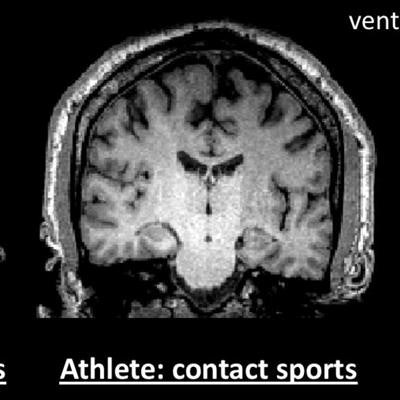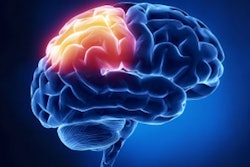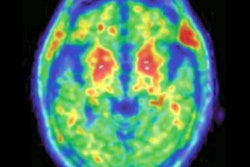
Are concerns about the brain health of professional athletes who played contact sports overblown? That's the implication of a new study that found no signs of brain abnormalities on MRI scans of former hockey and football players that would suggest the presence of chronic traumatic encephalopathy (CTE).
In a series of four papers on the topic published online August 3 in the Journal of Head Trauma Rehabilitation, authors from the University at Buffalo (UB) found no significant evidence of neurometabolic, hemodynamic, functional, or structural abnormalities on MRI brain scans that would indicate the presence of CTE or early-onset dementia in a group of National Hockey League (NHL) and National Football League (NFL) athletes.
The findings have led the authors to question whether contact sports automatically lead to CTE and, subsequently, dementia in professional athletes.
"Perhaps the most important finding in this study is the fact that, after completing extensive evaluation for cognitive function, executive function, and mental health, none of the former NHL or NFL athletes could be diagnosed with early-onset dementia," wrote lead investigator Barry Willer, PhD, a professor of psychiatry, and colleagues.
"This study and similar investigations ... do not provide argument against the existence of CTE but do suggest that the risk is not as great as once believed," they also noted.
Origins of CTE
In recent years, millions of dollars have been committed to research into traumatic brain injury and CTE, as well as whether the conditions are linked to dementia. Previous studies have investigated a possible link between the development of CTE and concussions and repeated blows to the head in contact sports, but the research is still in its infancy.
MRI scans of athletes with a history of concussion have shown changes in brain size, blood flow, and structural white matter months and even years after injury. Researchers have dug even deeper with PET scans to evaluate the brain's condition at autopsy and MRI scans to detect the loss of brain volume and the presence of atrophy in regions associated with CTE in living subjects.
"We don't deny that CTE exists in some former athletes ... but it's not a sure thing. The larger question is: How prevalent is the problem?" said Willer, who also serves as director of research for the University at Buffalo Concussion Management Clinic, in a statement from the university.
"We designed the study so that when we discovered dementia we could also rule out or account for the myriad of other possible explanations for cognitive decline, such as mental health, lifestyle, eating habits, drug and alcohol abuse, and so on," he said.
For the study, the UB researchers looked at eight retired professional NFL players from the Buffalo Bills and 13 retired NHL athletes from the Buffalo Sabres (mean age, 56.7 ± 9.5 years). The men played an average of eight years in the NFL or NHL. Players were excluded if implants or medical devices contraindicated them for an MRI scan; they were also excluded if they had a history of concussion in the previous two years, a history of moderate to severe brain injury from any cause, a history of a cerebrovascular event that could lead to hypoxia, or a history of a learning disability.
The researchers also included 21 control subjects (mean age, 55.4 ± 9.3 years) who had participated in noncontact sports, such as running, cycling, or swimming, since their youth. These subjects were between 36 and 72 years of age, and they had no history of self-reported or documented concussions. The exclusion criteria were the same as for the contact-sport athletes.
MRI scans were performed on a 3-tesla system to assess neural structure, hemodynamic characteristics, and any indications of neurometabolite concentration impairment in the brain. The subjects also underwent comprehensive neuropsychological testing for mild cognitive impairment, and they answered questions about their executive function and personality.
Minimal differences
Although eight contact-sport athletes and three noncontact control subjects qualified for a diagnosis of mild cognitive impairment, the difference did not reach statistical significance (p = 0.08). In addition, MRI scans found no neurometabolic, hemodynamic, functional, or structural differences between the sets of athletes.
"Surprisingly, one of the few differences between the groups was the presence of cerebral microbleeds where more noncontact controls (n = 7) than contact athletes (n = 2) had at least one microbleed," the authors noted.
 Neither the brain of a noncontact-sport athlete (left) nor the brain of a contact-sport athlete (center) show enlarged ventricles or atrophied hippocampus, both of which have been associated with dementia. For comparison, the MRI at right is of a person with dementia and shows where abnormalities are located (arrows). Images courtesy of the Buffalo Neuroimaging Analysis Center.
Neither the brain of a noncontact-sport athlete (left) nor the brain of a contact-sport athlete (center) show enlarged ventricles or atrophied hippocampus, both of which have been associated with dementia. For comparison, the MRI at right is of a person with dementia and shows where abnormalities are located (arrows). Images courtesy of the Buffalo Neuroimaging Analysis Center.In one of the August 3 papers in JHTR, lead author Dr. Robert Zivadinov, PhD, along with Willer and colleagues, describe how they used 3-tesla MRI to investigate the volume of focal white-matter signal abnormalities, the volume of global and regional brain tissue structures, mean diffusivity fractional anisotropy, cerebral blood flow, and several other characteristics. Again, there were no significant differences in structural or functional MRI measures or in microscopic or macroscopic brain tissue injuries between the two sets of retired athletes.
The biggest health differences detected between the retired athletes and controls included a significant risk for obesity, chronic pain, orthopedic surgeries, and significant problems with sleep and anxiety. Eighteen (86%) contact-sport athletes had significant sleep disturbances, while 16 (76%) of them had undergone surgery at some point due to their injuries during their playing days.
The UB researchers acknowledged the relatively small size of their study and stated that more research needs to be done.
"The next steps in research should be to try to address the factors, genetic or otherwise, that make the risk of CTE for some athletes much greater than others," they concluded.


.fFmgij6Hin.png?auto=compress%2Cformat&fit=crop&h=100&q=70&w=100)





.fFmgij6Hin.png?auto=compress%2Cformat&fit=crop&h=167&q=70&w=250)











